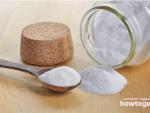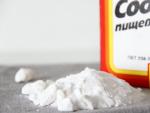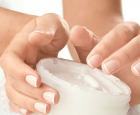Geranium - a blooming home doctor
Pelargonium or geranium (Geranium) is a unique plant belonging to the Geranium family. The plant genus includes over 300 species of perennial, less often annual herbs, subshrubs and shrubby forms. Now pelargonium, originating from South Africa, is widespread in temperate climatic zones around the globe. For beginning gardeners, we have collected complete information about keeping and growing pelargonium at home: how to replant, propagate, how to feed geranium, how to water it properly and how to treat diseases.
Unpretentiousness and rapid growth, abundant flowering and ease of reproduction have always attracted the attention of gardeners
In home floriculture, hybrid, artificially bred varieties are more often used, which can be divided into two groups: bush and ampelous. The most common varieties of geranium are as follows.
- Pelargonium thyroid (Pelargonium peltatum). An ampelous plant for hanging flowerpots. Long creeping stems, large green leaves, short pedicels with large flowers - the best option for vertical gardening.
- Fragrant pelargonium (Pelargonium graveolens). The leaves of the plant, rich in essential oils, can smell like rose, lemon or mint. Geranium oil is obtained from fragrant pelargonium, which is widely used in the medical, perfume, and food industries.
- Pelargonium large-flowered, English, or royal (Pelargonium grandiflorum). A variety of shrub geranium with large (about 6 cm) flowers collected in inflorescences.
- Garden or zonal pelargonium (Pelargonium hortorum, zonale). Plants can be grown at home, outdoors. Garden geraniums, which are often called kalachik, are divided into several types: Rosaceae (bloom with beautiful roses), tulipaceae (flowers reminiscent of tulips), the Stellar group of plants with star-shaped flowers, leaves in the shape of a maple leaf plate, and others.
- Pelargonium domesticum. This evergreen shrub was developed by crossing several varieties. White, pink, red or lilac flowers of home geranium appear in spring or summer, abundantly covering the bush, hiding all the leaves.
Beneficial features
Indoor geranium has beneficial properties: the essential oils of the plant purify the air from pathogens, help fight colds, ear, nose and throat diseases. Decoctions of parts of the plant are used internally for urolithiasis; they are used externally to treat skin diseases, purulent wounds, and ulcers.
The plant is widely used in cosmetology: the juice regenerates, refreshes the skin, evens out tone, smoothes out wrinkles, and a decoction of the leaves helps strengthen hair. The essential oil of the plant is valued and used in the medical, perfume, and food industries.

Geranium essential oil eliminates pain and inflammation, has antiseptic properties, soothes and uplifts.
The healing properties of the roots, stems, and leaves of the plant are due to the rich content of useful substances - flavonoids, tannins, carotene, vitamin C, fructose, and microelements. Thanks to this composition, when used externally or internally, the plant exhibits antiviral, bactericidal, antiseptic, wound-healing, analgesic, and astringent properties.
Care and maintenance
Caring for geraniums at home is simple: room temperature, moderate watering, good lighting, periodic loosening of the soil - everything that is required for pelargonium not to get sick and to bloom profusely.
Watering
How to water geraniums depends on the time of year. In summer, abundant watering is needed to prevent the geranium from drying out. But do not overdo it - excess moisture is detrimental to the flower. You need to monitor the condition of the soil, adding water as it dries.
Caring for geraniums in winter requires less frequent watering.
Illumination
Geranium is a light-loving flower that is best placed on windowsills on the sunny south side. These indoor plants also tolerate partial shade normally. But if the flower is constantly exposed to the bright sun, the leaves will get burned. Therefore, in summer, in bright sunshine, it is better to remove pelargonium from the windowsill.
Temperature and humidity
Pelargonium responds normally to temperatures of 12 ° C and above. Geranium cannot tolerate lower rates - the flower will get sick and die. It is best to grow the plant at normal room temperature.
Homemade geranium reacts normally to dry air and high humidity. But it is not recommended to spray the plant - it is harmful for pelargonium. The flower loves fresh air - in summer it is better to take it out into the open sky or onto the balcony.

Improper maintenance conditions lead to drying, wilting or rotting of the plant leaves.
Transplantation and circumcision
If pelargonium grows in a pot indoors, replanting is carried out:
- with strong growth of the root system (in an adult plant);
- if the plant is abundantly flooded with water.
To replant geraniums, you need to take a pot whose volume matches the size of the root part of the flower. Suitable for growing geraniums:
- country land;
- universal purchased soil;
- a mixture of humus, leaf and turf soil (2 parts each) with sand (1 part);
- composition of turf soil (8 parts), humus (2 parts), sand (1 part).
You also need to take care of good drainage from large expanded clay. The best time for replanting is early spring.
Indoor geranium, like most other varieties, needs pruning. The procedure is carried out in the fall, leaving 6–7 leaves on the stem. It is necessary to remove shoots that grow not from the root, but from the axils of the leaves. If the plant has grown over the winter, it can be pruned again in early spring. To enhance branching, shoots need to be pinched after 4–5 leaves.
Fertilizers
Fertilizers containing equal amounts of nitrogen, phosphorus, and potassium are suitable for pelargonium. It is desirable that the mixture also contains other microelements: zinc, manganese, copper and iron, boron, calcium and magnesium. As a rule, fertilizing is used for flowering and balcony plants.

The plant needs potassium for abundant flowering.
Iodine is an excellent fertilizer, ensuring abundant and long-lasting flowering of pelargonium. A drop of iodine is added to 1 liter of water, 50 ml of the solution is carefully poured into the pot along the edge. Do not pour the solution in the center of the pot, exceed the recommended amount, or prepare a more concentrated solution. Such manipulations will lead to burns of the roots and death of the plant.
- from May to September, feed the plant twice a month, the rest of the time - not so often;
- Before feeding, move the flower to the shade;
- do not apply fertilizer in hot weather;
- do not pour liquid fertilizers into dry soil (if you do not water the flower first, the roots of the plant will receive a chemical burn).
It is forbidden to use fresh organic fertilizers for feeding geraniums - the flower does not perceive them well.
Growing and caring for the garden
When planting pelargonium in the garden, the flower should be placed in a well-lit place, but protected from drafts. However, the plant should not be placed in the shade, otherwise it will not bloom.
Most often, flower beds and flower beds are decorated with frost-resistant garden varieties. This:
- blood red geranium;
- Balkan;
- meadow (red-leaved);
- geranium "Eriantum".
It is better to purchase rhizomes for planting in February. Good planting material is a dense underground part with a solid, not dried out main root and developed adventitious roots. The rhizome is placed in a container with wet peat, placed in the refrigerator, and moistened once every 14 days. Planting is carried out when the ground warms up enough.

At the slightest frost, plants planted in the garden are covered with non-woven material - agrofibre or lutrasil.
When growing from purchased plants that have begun their growing season, they are planted in any container (the volume should be slightly larger than the size of the root system). Planting in open ground is carried out in mid-May, leaving a distance of about 30 cm between the bushes. The hole is filled with a nutrient mixture, the roots are carefully placed, covered with earth, and watered. When replanting a plant, the same rules are followed as when planting. Geraniums are transplanted in autumn or spring.
The soil for good growth of bushes should be light and loose. A young plant requires frequent, abundant watering; over time, the intensity of soil moisture is reduced. Garden bushes need fertilizing.
Problems and diseases
Those who know how to care for geraniums at home rarely have difficulties. However, like other houseplants, geraniums can become sick and be attacked by pests.
- Gray rot (gray mold). Affects leaf blades. The affected leaves are removed, and the bush is sprayed with fungicides (antifungal agents).
- Root rot and root collar rot. Appears with frequent watering if the soil does not have time to dry out. The disease is destructive to pelargonium.
- Whitefly. The pest infects the lower part of the leaf blade and multiplies rapidly. The whitefly feeds on the sap of the plant, which is why the pelargonium leaves turn yellow and fall off. The drugs Zubr, Actellik, Confidor, Fufanon are used for treatment. If necessary, repeat the treatment.
- Powdery mildew. A fungal disease in which the plant becomes covered with a white powdery coating. To combat the fungus, use Bordeaux mixture, Topsin-M, Topaz, diluted copper sulfate, solutions of ammonium nitrate or soda ash with laundry soap. Chemicals can be dangerous to the plant, so it is better to dilute the drug to a low concentration.
- Gray, black or green aphids. The pest attacks the underside of leaves. Aphids are gotten rid of with insecticides or chamomile infusion.
- Rust. A fungal infection manifested by yellow and brown spots on the leaf blades. Treatment is carried out with fungicidal agents, and during replanting the soil is disinfected.
In addition to the listed diseases, when growing geraniums at home, another problem very often arises - the leaves turn yellow and fall off. Main reasons:
- not enough light;
- excess moisture;
- heatwave;
- cramped pot;
- moving a flower from a balcony or street into a room.
How it blooms
Caring for pelargonium at home does not require much effort or time. By maintaining optimal conditions, beautiful flowers can be admired from May to August, and some varieties can bloom almost all year round.

In order for new flowers to bloom, it is important to remove faded buds in a timely manner.
The size, shape and color of flowers are different for each species. Usually these are large flowers of white, purple, violet or blue, arranged singly or collected in racemes.
Reproduction
Geranium propagation is carried out:
- cuttings;
- seeds.
Cuttings
The cutting is taken from the top (it should have at least 3-4 leaves), placed in a glass of water, and left in a warm room. When the roots are formed, the cuttings are dried a little and planted in a pot with soil. After rooting, the top is pinched off. Geranium propagation by cuttings is carried out in the spring.
Some gardeners know how to plant pelargonium by dividing the bush, but planting a plant in this way is quite difficult.
Seeds
Experienced gardeners know how to propagate geraniums by seeds, and use this method to breed other varieties. When planting geranium seeds of a certain variety, seedlings with other decorative characteristics can grow: the shade of leaf blades, flowers, bushiness and height of pelargonium change.
To grow seedlings from seeds, use loose soil with the addition of sand and humus. Sowing is carried out in early March or earlier, but then it is necessary to provide additional artificial lighting. Before planting, the ground is watered with a weak solution of potassium permanganate, and the planted seeds are covered with a 2 cm thick layer of soil.
The crops are covered with film and placed in a warm place (18 – 22 ° C). The seedlings are moved to a place with a temperature of 16 to 20 ° C, and after the first leaves appear (after 1.5–2 months), they are planted in pots.

The seedlings are planted in pots after 2-3 leaves appear.
If it doesn't bloom
Why don't geraniums bloom? The problem may be due to:
- insufficient watering;
- excessively dry, warm indoor air;
- lack of light;
- low temperature;
- lack or excess of nutrients in the soil;
- a pot that is too spacious (flowers will appear only after the volume of the pot is completely filled with roots);
- untimely pruning;
- the onset of the dormant period (autumn).
To achieve flowering, you need to maintain optimal temperature conditions, water and feed in a timely manner, and replant the bush correctly. In autumn, watering and fertilizing should be reduced.
Purchase Features
You can purchase healthy, well-rooted plant cuttings adapted to normal conditions at any time of the year in specialized flower shops and greenhouses.
The cost of pelargonium is determined by the type and varies between 500–1000 rubles. The most expensive varieties of pelargonium - Prince Gustav, Lara Marjorie, Unicorn Zonartic Rose - can be purchased for an average of 3,000 rubles.
Geranium is an unpretentious flower. However, in order to grow a gorgeous flowering bush, you need to follow certain recommendations for the care and maintenance of pelargonium at home. And then geranium will take its rightful place in any flower arrangement and will delight with its appearance and beautiful flowers.








 Nail care
Nail care Prom hairstyle for long hair
Prom hairstyle for long hair 18 wonderful New Year cards that even a child can make
18 wonderful New Year cards that even a child can make The best set of exercises for morning exercises
The best set of exercises for morning exercises